Column Malaysia
Thoughts on the Short Film in Malaysia(2/2)
Nurturing Up-and-Coming Filmmakers: Film Universities and Cinema Schools
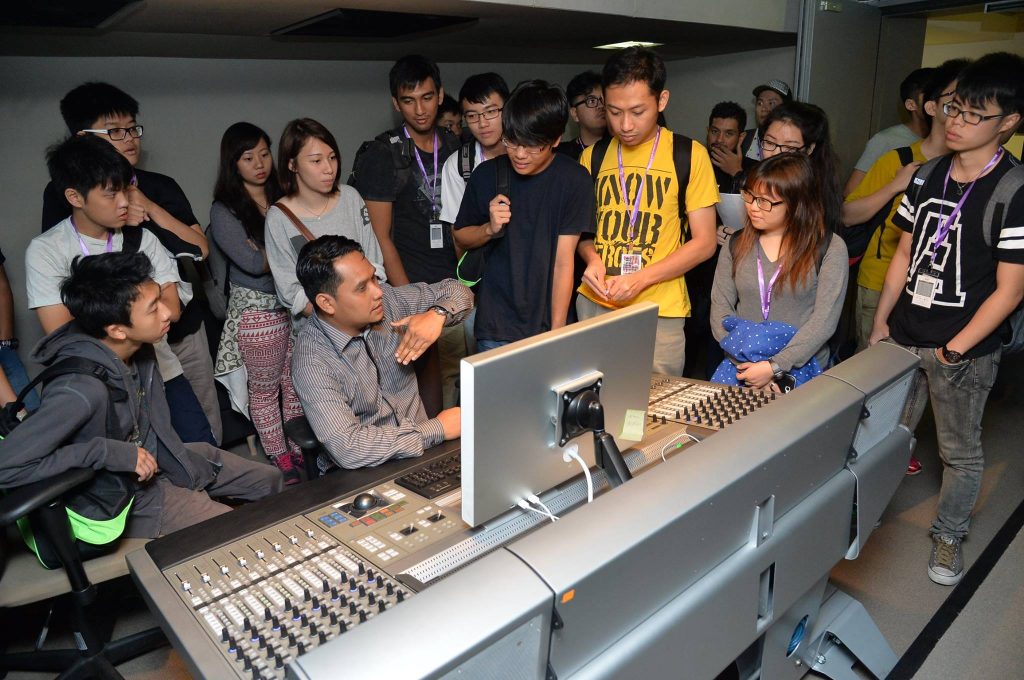
The study of film and filmmaking as an academic discipline is a relatively new in Malaysia. And, I think more importantly, the study of the arts and humanities can be more appreciated in Malaysia. For Malaysia to truly become a developed nation, it has to seriously encourage all of its citizens to think critically about the world around them, about how their world is represented, and to be able to express themselves. (For example, I don’t know of too many programmes in Malaysia devoted to the study of literature). And even if not all arts students eventually become working artists, other professional fields would benefit from having employees with a critical eye and a background in the arts and humanities (for example, the civil service, which is quite substantial in Malaysia). But I suspect the study of the arts is not the most popular among many students or their parents, due to the perception of the possible professional paths.
My other admittedly anecdotal impression is that study of film is more popular among urban students, which is again understandable but also a challenge I hope to work on since 1) Malaysia has a large rural population and 2) the arts heritage in rural Malaysia can be particularly rich, and many interesting Malaysian stories I have heard personally I heard in rural areas.
There are a few universities (I can think of about 6 in total) with filmmaking programmes or with programmes that include the classes in the study of film, usually in faculties on arts, theatre, or communications. Of course you know better about the study of filmmaking at MMU FCM, while now the relatively new Faculty of Cinematic Arts at MMU is the only faculty-level filmmaking course of study (i.e. the equivalent of a “film school”) that I am aware of in Malaysia.
MMU FCA hopes to become the first Malaysian film school to become a member of the international film school association CILECT (Centre International de Liaison des Ecoles de Cinéma et de Television). We are hoping to start our Foundation programme soon here, which is important to me because I worry that the students here are only taking classes about film, and that they also need to study other arts, history, literature, etc. as well.

Southeast Asian Collaboration
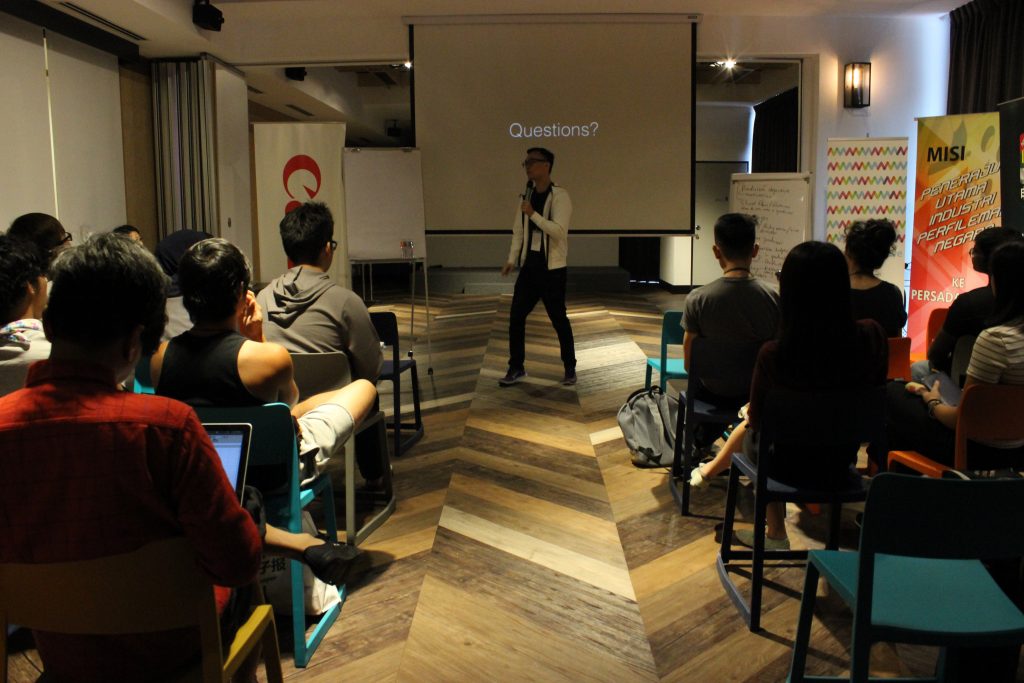
I think my points in the previous subtopic may answer part of this. Also perhaps there is a labour issue to consider. It is no problem for ASEAN citizens to travel to other Southeast Asian countries on social visit/tourist visas, but temporary work might cause some problems.
While I consider part of our faculty’s main objective to educate the citizens of Malaysia, I also hope to get more students as well as lecturers and visiting filmmakers from across Southeast Asia. I encounter some administrative hurdles sometime, but also financial as well in terms of visiting there or bringing them here.
Thoughts on the Short Film in Malaysia [1/2]
written by : Tan Chui Mui
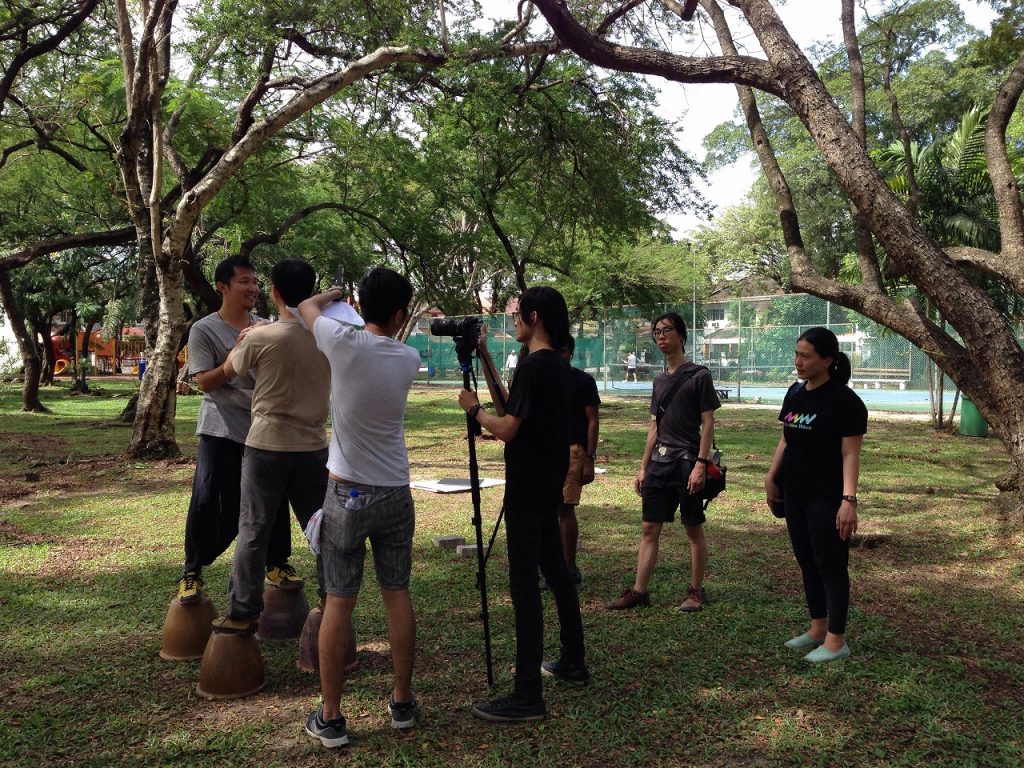
Last month, Tan Chui Mui was invited to speak about short films at Southeast Asia Program & Symposium at the 18th edition of Short Shorts Film Festival & Asia.
While preparing for the symposium, she decides to ask some prominent figures in the circle of film industry and film education in Malaysia to weigh in on their respective views on short films in the country.
Dr. Charles Leary has a Ph.D. in Cinema Studies from New York University’s Tisch School of the Arts. He is currently the Dean of the Faculty of Cinematic Arts, the newest faculty at Malaysia’s first private university, Multimedia University.
The Short Film
The “short film” has a long history in the cinema, as indeed the first films ever made would now be considered “short.” In 1898, the first film ever shown in Kuala Lumpur was a “short” film – a record of Queen Victoria’s Diamond Jubilee celebration.
But if the Queen’s Diamond Jubilee film played today in Kuala Lumpur, I doubt it would be called a short film. Today in Malaysia, the term “short film” (or “filem pendek”) has a very specific – by which I mean narrow and limiting – usage.
In Malaysia, a short film refers to a short fiction film. And so a documentary film that is shorter than a feature-length documentary film is not a short film. It is a documentary, and thus, apparently not a “film.” While this may seem like semantics, and a commendable service of a common vernacular, the usage nonetheless highlights an imprecise definition of the medium in Malaysia that privileges classical fiction as the defining characteristic above, for example, documentary and experimental modes.
On the other hand, of course, filmmakers rarely make “films” anymore – they make digital videos – so the very term “film” itself is a vernacular one.
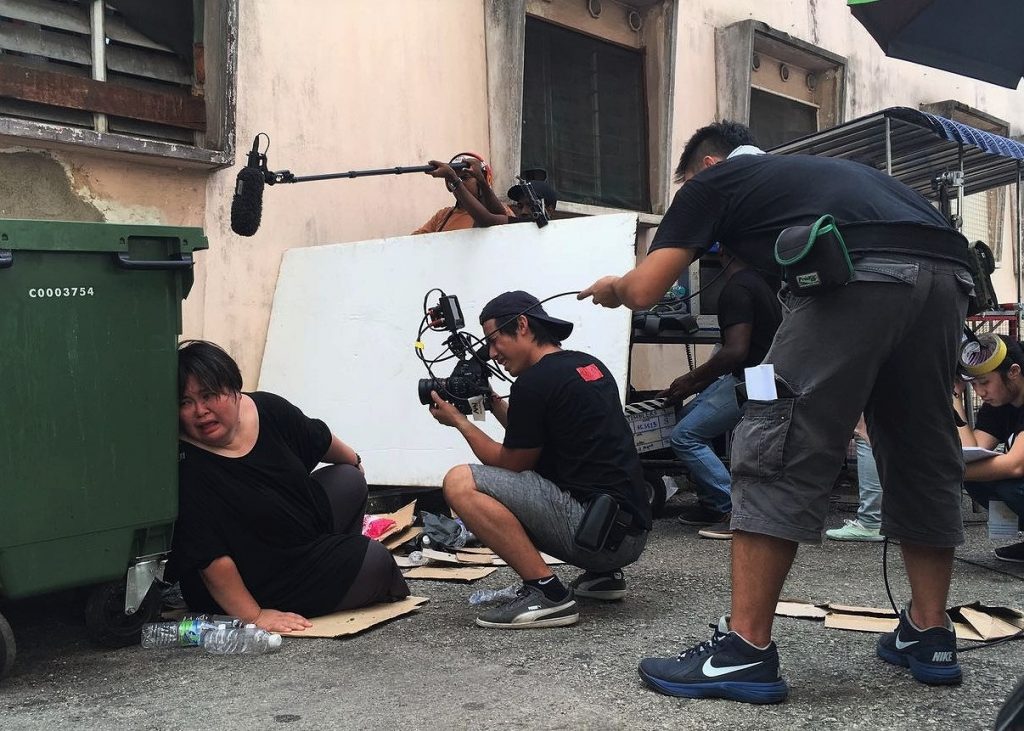
The short film (especially if broadly defined) plays an important role in recent Malaysian film, although not too often in Malaysia’s cinemas, and I believe it will play an important role in the future.
One of Malaysia’s most celebrated filmmakers, the late Yasmin Ahmad, was first celebrated for her short films on television – that is, Holiday commercials/public service announcements sponsored by Malaysia’s national oil company. Other more recent examples of private commercial sponsorship of short filmmaking include the “BMW Shorties” programme. Such initiatives perhaps are similar to what has been termed “microfilms” in Taiwan for example – a short film with minimal product placement for the sponsor – and there’s surely more opportunity for such in Malaysia.
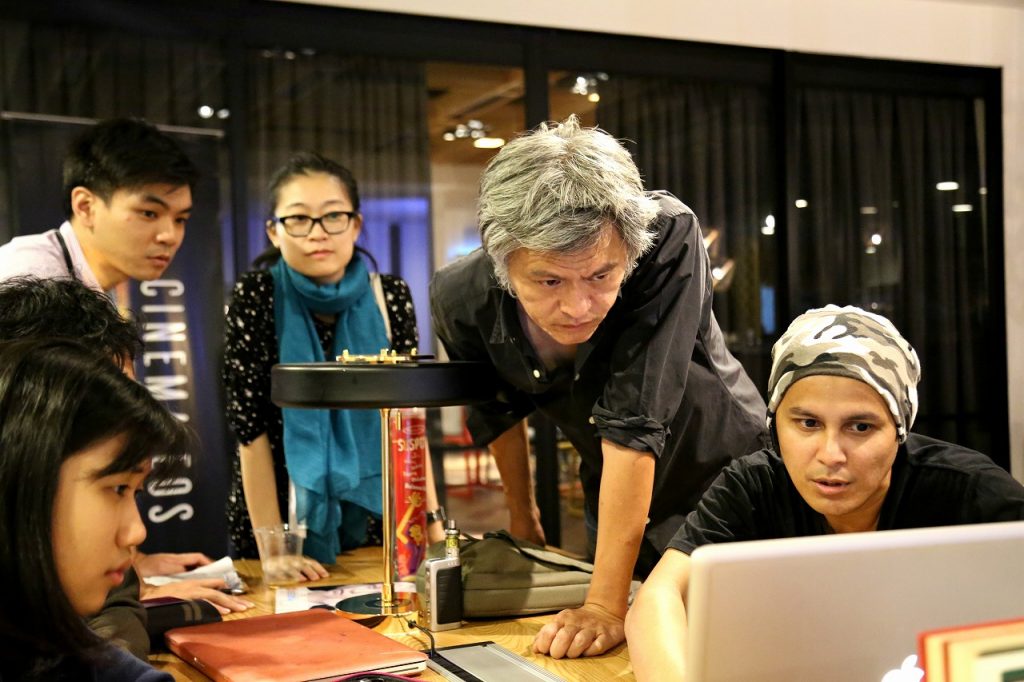
Local contests – held by NGOs, government agencies, private companies – frequently feature one of two components: either a logo design contest or a short film contest (that advertises the mission of the respective institution). I don’t think this is the most promising direction for short filmmaking (particularly since logo design contests can be equated to free labour that undercuts the local design industry).
Film Festivals (in Malaysia as well as across Asia) continue to be a venue for short films – whether they be short fiction films, short documentary films, or short experimental films.
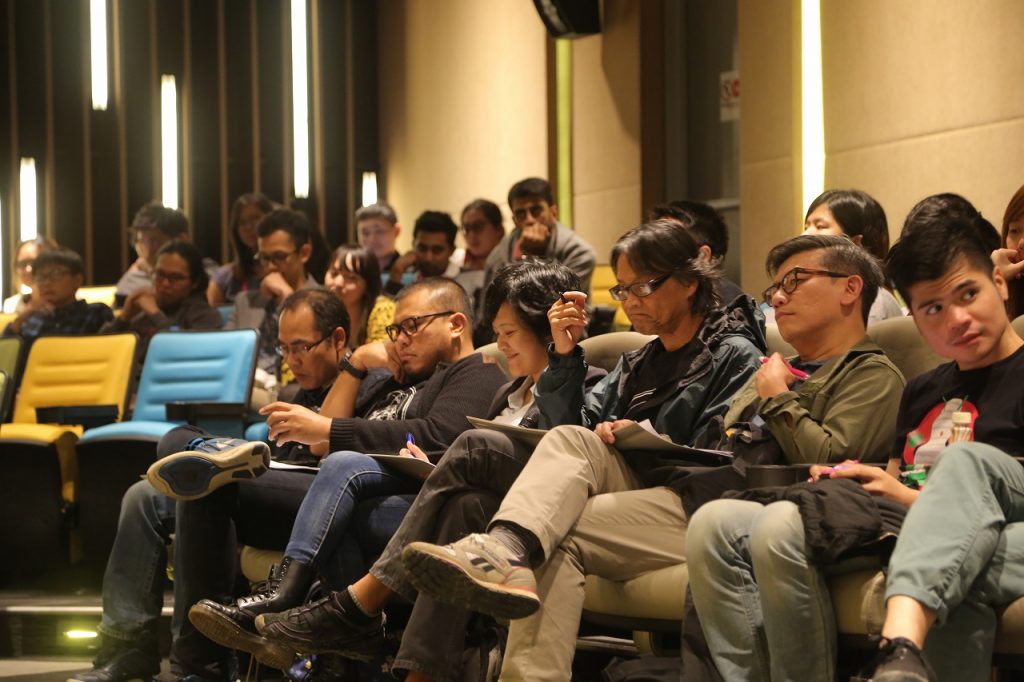
Today in Malaysia (and across the world) many people also often consume films online rather than in the cinema or on television, and social media sites like YouTube have provided a platform for both independent filmmakers, commercially sponsored ones, and music video producers as well who look to YouTube as a source of revenue. Some film companies have designated staff and funding specifically for social media content.
Furthermore, in addition to sites like YouTube or vimeo, Viddsee is an online video site that specifically promotes independent filmmaking in Southeast Asia. The spread of different types, sizes, and shapes of “screens” outside the cinema also suggest that the short film may develop into other modes of spectatorship that may include interactive modes.
(to be continued…)
The Outline of Malaysian films [2/2]
Kazuo Itaba
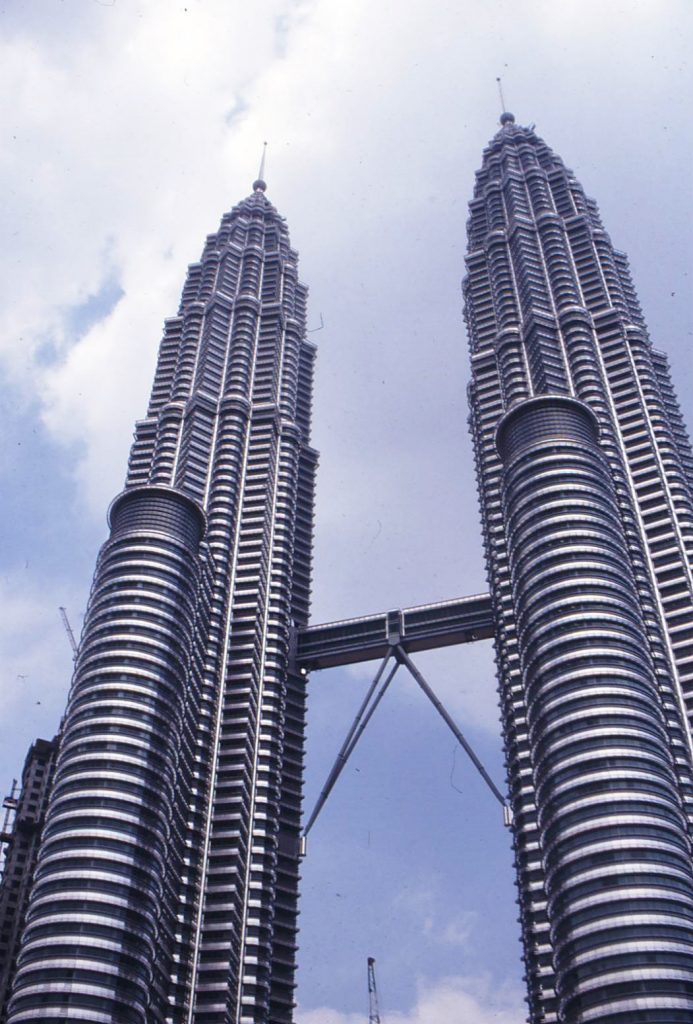
Enjoying the Movies in Malaysia
The reality is that opportunities to appreciate Malaysian films outside of Malaysia are still very limited, especially at Japanese film festivals. So what are Malaysian theaters like?
The first time I saw a movie in Malaysia was about 14 or 15 years ago, and it was the Hollywood hit “The Matrix” (1999). Its original visual effects were already being applauded. I watched it in an art-house theater that even now is so worn down compared to all other theaters I’ve seen. And at the time, I didn’t think it was really worthy of being praised so highly.
It wasn’t until I watched it again a few weeks later in a Hong Kong theater that I realized something. The reason why I wasn’t impressed at the Malaysian theater was because the sound system was very old. Now there’s Dolby and digital sound, but back then, theaters with patchy sound were prevalent. Cinema complexes have become commonplace in Asia, but it was rare to find screens that supported digital sound. Before watching, you had to check whether the film was dubbed or subbed as well.
Malaysian theaters offer a diverse selection of movies, including those from Hollywood, Malaysia, Hong Kong, Taiwan, India, Thailand, and Singapore. This is to accommodate the races that populate Malaysia as a result of Malaysia’s geographic location. But what’s interesting is that within the Indian-Malaysian population, there’s a large number of Tamil people from southern India. There’s not only the mainstream Mumbai-based Hindu movies; there are also many chances to see Chennai-based Tamil movies.
To reflect the diverse population, it’s interesting that some films may have three or four sets of subtitles. Tickets cost about 10 Malaysia ringgits (around 260 yen), much cheaper than a Japanese ticket. To escape the heat, people casually make their way over to the movies. I think you could also say it’s a great solution for a traveler’s weary feet.
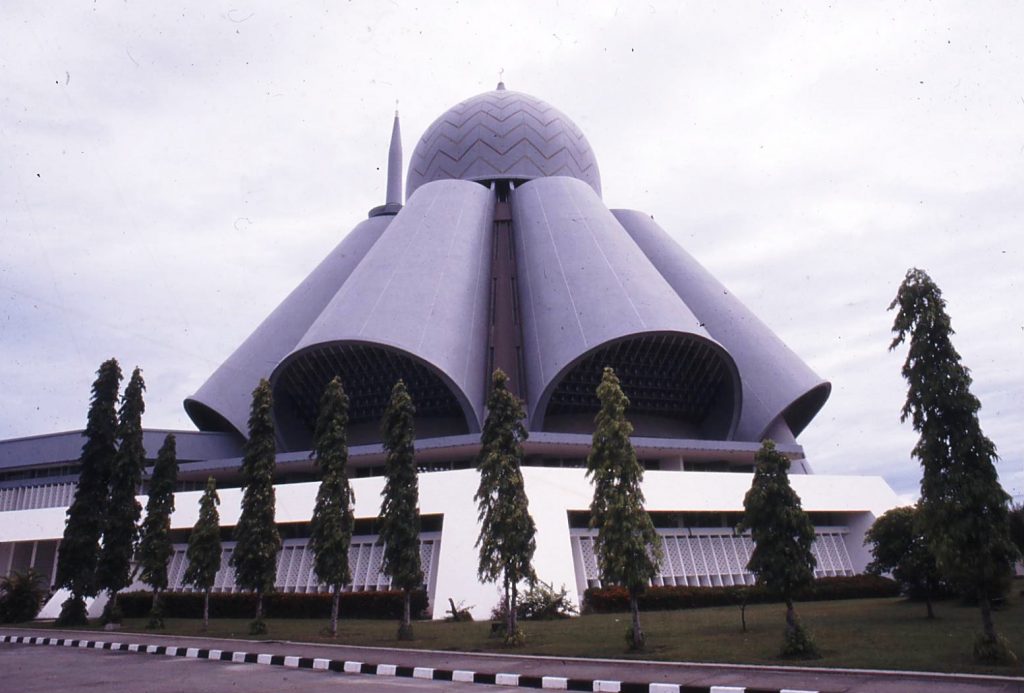
What Makes Malaysia Unique
Malaysia’s territory is divided between the Malay Peninsula and the northern region of Borneo Island. Not only are there various ethnic groups, but the relationship between the two areas are unique in a sense where coming and going between both areas requires an immigration inspection.
Japanese visitors are more likely familiar with parts of the Malay Peninsula, like Kuala Lumpur, Penang Island, Langkawi Island, and Malacca, but Borneo Island entices visitors with its orangutan sanctuaries, high mountains like Mount Kinabalu, and other landscapes that overflow with rich nature. There’s a wide selection of food including not just Malaysian, Chinese, and Indian cuisines, but also choices ranging from Japanese food to Western food, and fast food like hamburgers are very accessible for travelers.
Even in Japan, it’s become the norm to use LCCs, or “low-cost carriers” for air travel. Come to think of it, the LCC pioneer was the Malaysia-based airline AirAsia. Their route network wasn’t only limited to within Malaysia, it also extended to other countries serving nearly the entire Asian hub. And now, with companies that commission LCCs and a more complete bus network than Japan, domestic travel is very easy. The cost of transportation is low, it’s convenient, and moreover, compared to Singapore next door, accommodation costs are much more reasonable, and from the start, these things make Malaysia a popular destination for older Japanese people.
Even so, as a travel destination for Japanese tourists, compared with the surrounding countries like Thailand, Indonesia, and Singapore, Malaysia is still behind in terms of accomplishments and its degree of popularity. On the other hand, without it overflowing with Japanese people, you could say it still has a mysterious appeal. Now just might be the perfect time to explore Malaysia.
“Sepet”
https://www.youtube.com/watch?v=SfSjQfhhjsQ
The Outline of Malaysian films [1/2]
Kazuo Itaba

Impression of Malaysia
Malaysia. What idea do Japanese people have of Malaysia? When I think of Malaysia, what comes to mind is how it’s considered to be the number one immigration destination for people in their old age. It’s not like there are surveys or reports to challenge this assertion, but is it true? There usually is this doubt. Friends, coworkers who love travel as much as I do, many backpackers, and people I’ve chatted with during my travels naturally talk about traveling and places they have traveled to abroad. For those who have traveled in Asia, each has a country they’re enchanted with, and want to revisit over and over again. But apart from people visiting on business, residents, or those visiting family, I have met very few people enamored with Malaysia enough to visit multiple times. At most, people go to Malaysia to do visa runs from Thailand, or they just stop by on their way to Singapore, Thailand, or Indonesia. As for me, I’ve probably entered the country about ten times in my life. This number might be considered to be on the high side, but compared to the 200 times I’ve entered Thailand, clearly it’s not very much.
My first trip to Malaysia was 26 years ago, and actually it was when I was on my way to Singapore from Thailand. After eating Thai food flavored with that characteristic kick to it, Malaysian food seemed to be lacking, and even compared to the refined taste of Singapore’s dishes, it hardly left an impression on me. I carried that “something or other” impression around with me.
And then the other day, I realized something while on my two-week trip to Borneo Island and Kuala Lumpur. When I was younger, the impression I had of Malaysia was “Man, this place is boring,” but now that I’m well into my middle age, it’s changed to “Actually, Malaysia’s not so bad. Rather, it’s quite nice.” I am convinced that it’s a lovely place for older folks. When I was young I would travel as economically as possible, but once I established a budget accounting for more expensive hotels and food, I began to enjoy Malaysia’s safety and the quality of its hotels and food.
As you may already know, the nation of Malaysia is composed of the Malay Peninsula and the Sarawak and Sabah States in the northern region of Borneo Island. I mostly recently went to Borneo Island for the first time, but it felt like a different nation, even a different culture. The Malay Peninsula is also quite leisurely, but that’s all that’s similar. The peninsula also is guided by restrictive Islamic rules. Kota Kinabalu, the state capital in Sabah, is somewhat lenient when it comes to alcohol, but I found it difficult to spot an alcoholic beverage even in a convenience store in Sandakan at the eastern tip of the peninsula. It goes without saying that it was the same in restaurants. When I finally came across a beer, it was at a Japanese restaurant in a foreign-owned hotel. If you’re going to travel the Malay Peninsula, can you make it without having a drink? For someone who lives for alcohol like me, it was tough.
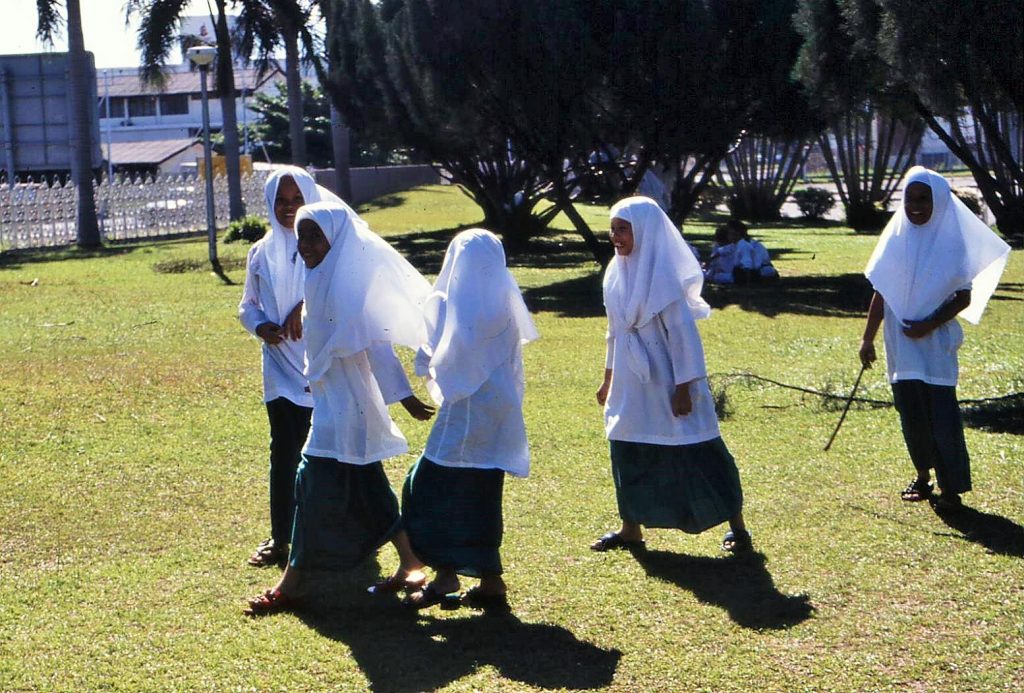
About Malaysian Movies
I am a total Asian movie addict, but when it comes to Malaysian films, there’s very little information out there. Since the 1980s, more and more Korean, Taiwanese, Vietnamese, and Thai films have been released in Japan, but I’d have to say that Malaysian films were just so plain. However, as Asian films improved, there was a trend where, at every film festival in Japan, Asian films would be featured, until at some point there were film festivals organized specifically to showcase Asian films as the main attraction. As a result, it became essential for Asian countries to gather films together, and Malaysia gradually began releasing films as well. When it came to ratings however, Malaysia struggled continuously.
But among Malaysia’s poorly received films appeared an internationally-acclaimed film and director in the 2000s. At the 2003 Yamagata International Documentary Film Festival, the documentary “The Big Durian” directed by Amir Muhammad won Special Mention for the New Asian Currents award. This film also won Special Mention for the Dragons and Tigers Award at the Vancouver International Film Festival the following year.
Then in 2005 at the 18th Tokyo International Film Festival, director Yasmin Ahmad’s “Sepet” was screened in the Winds of Asia category, a movie which would later become synonymous with Malaysian filmmaking, and grabbed the attention of many film industry insiders and fans alike. This film won numerous awards even at Malaysia’s film festivals, shining in honor. Sadly, director Yasmin Ahmad died at the age of 51 in 2009. But her few films have left a lasting impact on Japanese movie fans.
Malaysian films, like other Asian films, have also seen an increase in popularity, domestically of course, but from abroad as well with filmmakers directing study abroad programs, television programs, and commercials.
(to be continued…the next clip is going to uploaded on Jan. 15th.)
“The Big Durian”
Edmund Yeo and Malaysian films
#1
It has already been seven years since I first met the guy. To put it more accurately, maybe I should say, when I first met the guy’s short film—.
A woman’s monologue was accompanied by various clips that began in Japan, on to Malaysia, India, and so on. If these unrelated clips that filled the screen happened to be still pictures instead of videos, maybe it would have reminded me of Chris Marker’s La Jetée. Emotions that words can’t explain, bustling intentions that can’t be replaced with languages, aspirations that continue pleading to be expressed… These things came fluttering down from the screen, and I found myself trying to capture each and every one of them with both of my hands.But before I knew it, they slipped past me and continued to flow toward their next travel destination, as if there’s a meaning to continue flowing for eternity and to never reach the destination for all eternity.
The guy’s film called Fleeting Images was exactly like that.The creator was a Malaysian man named Edmund Yeo.My first impression was, “So this is the guy…”
Edmund’s film Fleeting Images should be called “Short-lived Images”. The images that flowed and disappeared every second and every instant with the flow of time, was similar to that instantaneous flicker of our lives: elusive, haphazard, and the destination unknown. A letter filled with an ephemeral emotion is handed to us without telling us who it’s addressed to, and the voice that reads the letter becomes a distant echo, resists the flow of time, and continues to resonate in our ears.
Who is it addressed to? Without knowing, the woman’s monologue becomes grains of words, crystalizes through the flowing time, and awakens a piece of our memory as it turns and runs away.
While a couple of letters turn into the echo of a monologue and disappear between time and space, we quietly wait for the next page to be turned…You can say that seeing his films is like reading through a book. It’s a repetition of experiences. What’s important is not to give a fixed meaning to it. Rather than that, we must embrace the endless sway of transience as it is. It’s to continue this behavior in order to keep reliving the time.So this is the guy who depicted all that…
The guy in front of me didn’t look like a movie youth or like a literary youth at all. An innocent smile filled his dark-colored face and “friendly” and “lovable” were the adjectives that fit him perfectly.
Until then, I hadn’t had the opportunity to come face to face with a Malaysian person, so he was my first Malaysian friend. From his Chinese name, I kind of predicted he’d be a Chinese Malaysian, but his looks greatly defied my shallow speculation and I found myself sitting up straight. It was out of respect for the creator. This film’s unexpected surprise of beginning in Malaysia and going through Japan, will continue to touch my heart.
This is what triggered me to begin thinking about Malaysian films—.In Japan, Yasmin Ahmad is a prominent figure, but how many of us know the background, the present, and the future of Malaysian films……?Edmund mentioned this in an interview once— “The country of Malaysia consists of multiple ethnic groups and cultures. We all have our distinct ways of living. So in my case, since I’m Malaysian Chinese, the characters of my films speak Mandarin, but I think the flow of time and methods of visual expressions we use in our filmmaking as well as the emotions that exist are totally different from what you see in Taiwanese films, Hong Kong films, and Chinese films. (“OUTSIDE IN TOKYO” )
The multiethnic country, Malaysia. Although it mainly consists of Chinese people, just like the distinct development of its cuisine, films have also taken shape by absorbing a variety of sensibilities and tastes.That’s why I don’t feel that Edmund’s films are different from ours.
From Japan to Malaysia, and on to India, the fleeting fragments of images continue on as if they’re passing through a corridor, coupled with the monologue that tickles our ears as they pass by, taking us back to a nostalgic time and place that we possibly knew in the past. It’s the present but no longer the present. It was once a time in the past, but not anymore. It’s like a mixture of a faint memory and a premonition…… Each element is huddled together but then untangled once again…….
From Japan to Malaysia and on to India, transcending space and time, memories are linked together and images shimmer as they connect with one another. It’s something that’s created by passing through Malaysia, a topos where various times and cultures wander back and forth. That is the very reason why a certain richness is fostered and people who are no different from all of us begin living lives that are no different from ours… inside the film of Edmund Yeo.
#2
Now let’s talk about Malaysian films… Well, I’m not actually well-versed and knowledgeable about Malaysian films. I only have a general knowledge. But my encounter with Edmund Yeo no doubt changed that a little bit.Yasmin Ahmad, a leading figure in the Malaysian film industry, passed away (summer of 2009) right after my encounter with Edmund, and special screenings to commemorate her took place in various locations. Let me introduce an Asahi Shimbun article from back then.
“Malaysia’s female film director Yasmin Ahmad, who has led the new trend of Southeast Asian films, passed away last month on the 25th from a cerebral hemorrhage at the age of 51. Her films that captured the realities of a multiethnic nation with humor and satire were screened in various film festivals in Japan and gained popularity. Her passing came just before the kickoff of her new film which included shooting in Japan. After graduating from a university in England, she became a TV commercial director for a Malaysian advertisement company. Her commercials with messages toward cross-cultural understanding and supporting the vulnerable, received high acclaim. She made her film debut with the feature film Rabun in 2003. The autobiographical film series featuring a young girl Orked, received international attention. Ahmad committed herself to supporting young directors in Malaysia and Singapore. She called herself “The storyteller”. She valued entertainment and creating content that was easy-to-understand for all. On the other hand, she cut through Malaysia’s intercultural conflicts and discrimination structure where ethnic groups such as Malay, Chinese, and Indian coexisted, and the screenings of her films often got axed. Her second film Sepet (2004) about the first romance between a Malaysian girl and a Chinese boy, received the Best Asian Film Award at the Tokyo International Film Festival (TIFF). In a blog post prior to her passing, she mentioned that receiving recognition at TIFF etc. motivated her to keep pursuing her activities. Her maternal grandmother is Japanese. She mentioned that Otoko-wa-tsurai-yo (It’s Tough Being a Man) was her favorite film. Her newest film Wasurenagusa was going to be based on her grandmother in which she explores her roots. The filming was scheduled to take place in October in locations such as Ishikawa Prefecture.” (Asahi Shimbun September 9th 2009. ‘The greatest director of Malaysia’s film industry, Yasmin Ahmad, passes away.’
http://www.asahi.com/showbiz/movie/TKY200908070263.html)
The death of Ahmad, who led the new wave of Malaysia, triggered people to reaffirm the frameworks of Malaysian films. I say this because I feel that new talents and gems in the filming industry are cutting their developmental stages short and moving into action.
Film festivals such as the Tokyo International Film Festival and Tokyo FILMEX have been introducing such Malaysian films both consecutively and at one-time screenings. As a result, young Malaysian talents such as Pete Teo (multi-talented music producer, film producer, and actor), James Lee (prominent figure in the Malaysian independent film industry), Lisa Surihani (leading actress in today’s Malaysian film industry), gradually became known (though it may be just among some).
Then in 2013 and 2015, special screenings such as “Cine Malaysia 2013 – Festival of Malaysian Film, Tokyo” and “Malaysian Film Week” took place to introduce the attractiveness of Malaysian films. There’s no doubt that this is an era in which new trends of Malaysian films exist and that there’s a ripple that hints something is about to emerge from there.
Now let’s return to talking about Edmund Yeo.Since encountering his film Fleeting Images, I’ve intentionally began pursuing his films. It’s because he belonged to Kohei Ando’s seminar at Waseda University and was using that as a backbone to create films one after another.
Kingyo (2009, submitted to the Venice Film Festival), Inhalation, Exhalation (both in 2010), Last Fragments of Winter (2012)… Each and every one of Edmund’s films adopts a slightly different style and topic. His inspirations include directors such as Tarkovsky, Edward Yang, Hirokazu Koreeda, but above that, Mr. Kohei Ando told me that Edmund loves Yasunari Kawabata. As if to prove that, Kingyo breaks free from locations and time, and fosters various cultures and multiple styles which are the backbone of Edmund’s films and includes new attractive elements of Malaysian films which would not have been created within the contained realm of Japan. No other location or time could have created that certain something that directly reaches out to us.
It’s not something that can be born and talked about using a single proper noun like Japan or Malaysia. It’s something that can only be born through the framework of Asia as well as the places and time where random cultures clash and react to one another while creating a buzz.
Edmund Yeo’s films not only help us focus our attention there but also continues to flow at the very center of all that.
#Postscript
Edmund Yeo’s first feature film River of Exploding Durians (2014) is a film in which he personally pursues the origin. A must-see.
